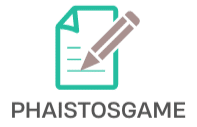How Does Phonics-Based Learning Improve Literacy Rates Among UK Schoolchildren?

The phonics approach to teaching reading is becoming increasingly popular in English language schools, particularly in England. Phonics is a method of teaching children to read by correlating sounds with symbols in an alphabetic writing system. In recent years, this approach has been credited with significant improvements in literacy rates among UK students. However, there’s a lot to unpack when it comes to understanding how this method works and why it’s proving so effective. In this article, we will delve into the world of phonics, exploring its benefits, method of instruction, and the compelling evidence that has led to its wide adoption in schools across England.
The Phonics Approach
Phonics is not a new teaching method. However, it has gained significant attention in recent years, especially in the realm of primary education. The approach is often referred to as "synthetic" because it involves "synthesising", or blending, sounds to form words. This is a crucial step in learning to read.
A découvrir également : How to Design a Pet-Friendly Urban Park That Encourages Responsible Ownership?
The central principle of phonics is that nearly all English words can be decoded by breaking them down into their individual sounds. For example, the word ‘check’ would be split into three sounds: /ch/, /e/, and /ck/. Children are then taught to blend these individual sounds together to read the whole word. This method is in stark contrast to the ‘whole-word’ approach, where children are encouraged to recognise words as wholes, without breaking them down into individual sounds.
The Evidence for Phonics
When it comes to teaching children to read, evidence matters. The efficacy of the phonics approach has been examined in numerous research studies, and the findings are consistently positive. Such studies have shown that children taught using a synthetic phonics approach from the start of schooling achieve significantly better reading accuracy, comprehension, spelling, and phonological awareness than children taught using other methods.
A découvrir également : Which UK Universities Are Leading the Way in Quantum Computing Research?
In England, the introduction of the Phonics Screening Check in 2012 has provided valuable quantitative data demonstrating the effectiveness of the method. This check is a short, light-touch assessment administered by teachers to monitor children’s progress in learning to decode words using phonics. The results have shown a steady increase in the percentage of children reaching the expected standard in phonics, indicating the success of this method in improving reading skills.
The Implementation of Phonics in Schools
Rolling out the phonics approach across schools in England has been a major educational reform of the past decade. This initiative, backed by the government, involves a complete overhaul of the way reading is taught in primary schools.
Teachers are now provided with extensive training in synthetic phonics teaching techniques, and new, updated resources and teaching materials have been developed. In addition, the government has provided schools with funding to purchase high-quality phonics training and resources, ensuring all children, regardless of their socio-economic background, have access to effective phonics teaching.
The Impact on Literacy Rates
One of the most significant benefits of the phonics approach is its impact on literacy rates. By improving children’s reading skills, phonics has a knock-on effect on their ability to engage with all other areas of the curriculum. Evidence shows that children who can read fluently and understand what they are reading are more likely to succeed at school, and later in life.
The phonics approach, with its emphasis on decoding and understanding words, equips children with the tools they need to become confident, competent readers. This confidence, in turn, enables them to explore the world of literature, absorb information across all subject areas, and express themselves clearly and effectively in writing.
Challenges and Considerations
Despite the many benefits of the phonics approach, it’s not without its challenges. Some critics argue that it can lead to an overemphasis on technical reading skills at the expense of fostering a love of reading. However, advocates of phonics argue that a strong foundation in phonics can actually enhance children’s enjoyment of reading, as it gives them the confidence and skills they need to tackle a wide range of texts.
Additionally, while phonics has been shown to be highly effective for most children, there will always be some children who struggle with this approach. This is where the expertise of teachers comes into play, in differentiating instruction to meet the needs of all learners.
The phonics approach is a powerful tool in the arsenal of English language education. It’s not a magic bullet, but the evidence suggests that it’s one of the most effective methods we have for teaching children to read. As such, it seems likely that it will continue to play a vital role in education in England and beyond.
The Role of Teachers in Phonics-Based Learning
In the application of a phonics-based approach to teaching English, the role of teachers cannot be understated. It is indeed the teachers who deliver the lessons, guide the children, and nurture their reading skills as they grow. In the context of phonics, their role is to unravel the complexities of the English language and break them down into simple, understandable chunks of information, so that learning becomes a joy, not a burden for the children.
This is why teachers are provided with extensive training in synthetic phonics teaching techniques. Through this training, they learn how to deliver the lessons in a structured, systematic manner, beginning with simple sounds and gradually building up to more complex words and sentences. They also learn how to identify children who might be struggling and how to provide extra support to those who need it.
Furthermore, teachers play a crucial role in assessing children’s progress. Through the use of the Phonics Screening Check, they can monitor how well children are learning to decode words using phonics. This data is invaluable in enabling teachers to tailor their instruction to meet the needs of individual students and to ensure that all children are making the necessary progress.
The aim of phonics teaching is not only to impart knowledge but to inspire a passion for reading. That’s why teachers are encouraged to incorporate engaging activities, games, and stories into their lessons, to make learning fun and to nurture a love of reading in their students.
Looking to the Future of Phonics-Based Learning
Since its widespread implementation in schools across England, the phonics approach has proven to be a powerful strategy for improving literacy rates. The evidence, both qualitative and quantitative, strongly suggests that children who learn to read using phonics achieve better reading accuracy, comprehension, and spelling than those taught using other methods.
However, as we look to the future, it’s important to remember that no single method can meet the needs of all children. There will always be some children who struggle with phonics, just as there are children who struggle with other methods. This is where a tailored approach to teaching reading – one that takes into account the individual strengths and weaknesses of each child – is crucial.
That being said, the success of the phonics-based approach in improving literacy rates among UK schoolchildren is undeniable. It has not only helped children to become better readers, but it has also given them the confidence to explore the world of literature, to absorb information across all subject areas, and to express themselves in writing. And for that, it deserves our recognition and our continued support.
In conclusion, while there are both challenges and considerations to be made, there is no denying the positive impact that phonics-based learning has had on literacy rates among UK schoolchildren. It is a method that focuses on understanding and decoding words, equipping children with the tools they need to become confident and competent readers. Despite some criticism, the evidence shows that it’s one of the most effective methods we have for teaching children to read, and it looks set to continue playing a vital role in English language education.
